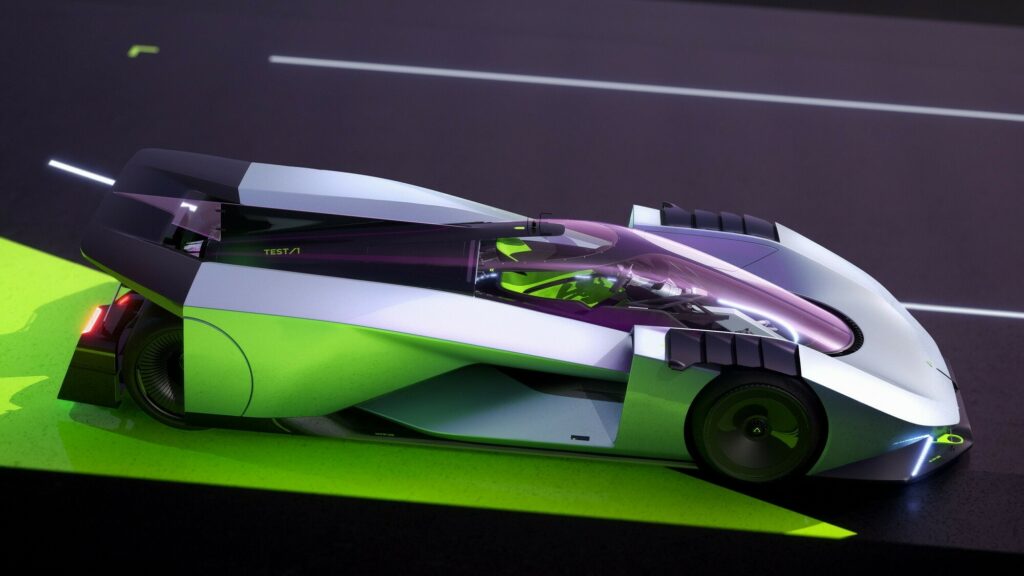With the introduction of the new Hypercar class, Le Mans has attracted a range of automakers to the sport of endurance racing. Italy’s Camal Stile decided to show off what it could achieve with the class’s proportions, creating the TEST/1 concept.
Although it has decided to use the Le Mans Hypercar proportions as a launch point, it hasn’t been confined by the series’ rules, which mandate that race teams use a hybrid powertrain that is limited to 670 hp (500 kW/680 PS).
Instead, Camal Stile has opted for a jet engine that is “of aeronautical derivation.” Theoretically powered by a kerosene and based on the turbojet principal, the design team estimates that the engine could produce up to 5,000 hp (3,728 kW/5,069 PS). Thanks to a coefficient of drag of 0.20, the team predicts that the TEST/1 could achieve a top speed of 280 mph (450 km/h).
Read: Alfa Romeo P7 Study Is A Hydrogen Jet-Powered Hypercar For The Future
That’s not the only impact that the jet engine has on the concept car. Although Camal Stile says that the car is based on Hypercar proportions, it is inspired by the Fiat Turbina, a test vehicle produced by the Italian automaker in 1954.
It featured the swoopy styling of the era, and its somewhat more modest jet engine could generate a still impressive for the era 295 hp (220 kW/299 PS). More than half a century ago, that was enough to achieve a top speed of 160 mph (250 km/h).
While the Fiat Turbina is an undeniably lovely car, this outside observer sees more of the turbine-powered Chaparral 2J in the TEST/1. Both share a very pointy front end, a wedge-shaped profile, and a back end that stops suddenly.
Whatever the inspiration, Camal Stile says that has embraced “sculptural lines and monolithic volumes” in the creation of this design exercise. It also wanted to intersperse the car with clean lines and exposed mechanics.
The driver and the jet engine are enclosed in a rocket-shaped cabin. Drivers are given a broad view out of the car thanks to an exposed glass cockpit. Meanwhile, for those looking in, the glass gives a view of the chassis, designed using additive technology, and a halo at the top provides motorsports-inspired rollover protection.
Camal Stile describes the TEST/1 as a “stylistic laboratory” used solely for design experimentation, allowing them to explore new ideas that may be implemented in their future car designs.

































